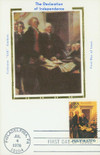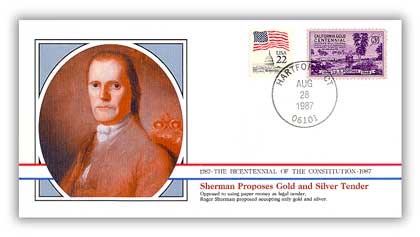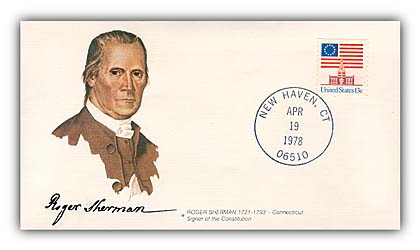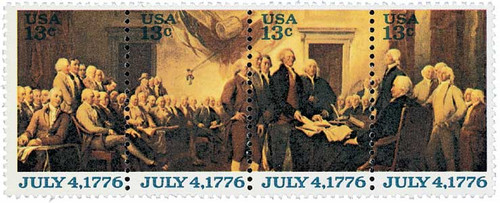
# 1693 FDC - 1976 13c Declaration of Independence: Jefferson and Franklin
Declaration of Independence
Death Of Roger Sherman
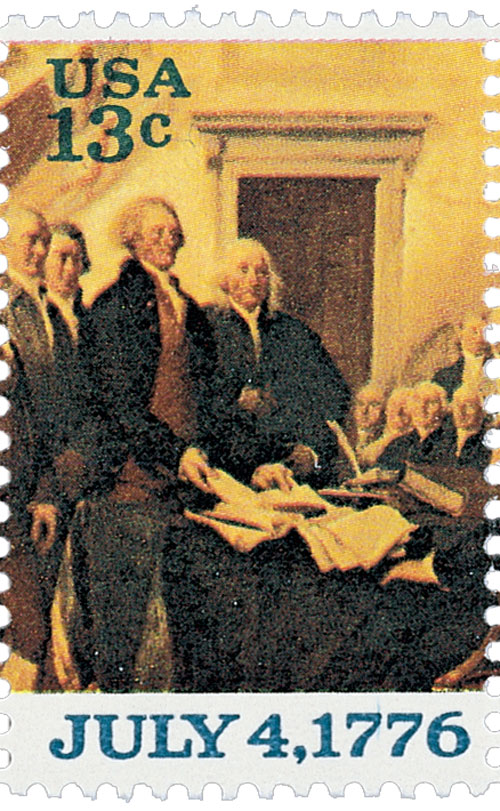
Roger Sherman, the only man in US history to sign America’s four most important documents; the Articles of Association, the Declaration of Independence, the Articles of Confederation, and the Constitution, died on July 23, 1793.
Sherman was born on April 19, 1721, in Newton, Massachusetts. With few educational opportunities available to him, Sherman read every spare minute – and often had a book open at his workbench in his father’s shoe repair shop.
After his father died, he moved to New Milford, Connecticut and with his brother, opened the town’s first store. Sherman first held an official office in 1745 when he was made surveyor of New Haven County. He was also made the town clerk of New Milford and produced a popular Almanac there each year from 1750 to 1761.
Sherman was accepted to the Bar in 1754 and elected to the General Assembly the following year. He went on to serve as a justice of the peace and justice of the Superior Court of Connecticut. By the time he was 40, Sherman established himself as a prominent lawyer and politician.
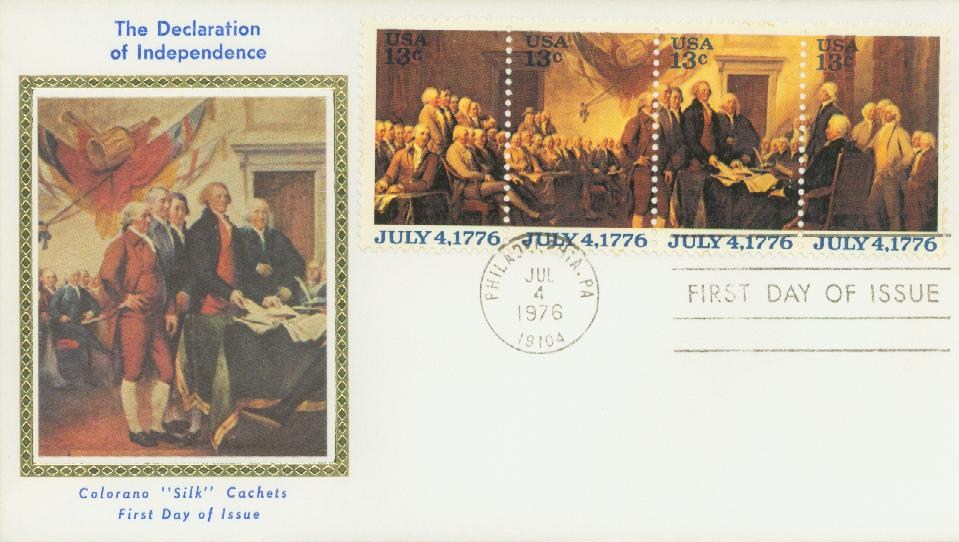
When the Revolutionary War broke out, Sherman was made commissary to the Connecticut Troops. He was then elected to the Continental Congress in 1774. Sherman helped create the Articles of Association, a precursor to the Declaration of Independence which established a trade boycott with Great Britain. Well-respected among his peers for his honesty and integrity, Sherman was also selected to help create the Declaration of Independence and the Articles of Confederation.
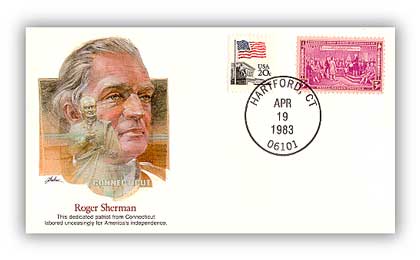
At the Constitutional Convention, Sherman was noted for his impassioned support of a strong federal government and the rights of smaller states. With 138 speeches to the convention, Sherman was by far one its most vocal members. Fisher Ames once said that in cases of uncertainty he looked at Roger Sherman, knowing that “if I vote with him I shall vote right.”
Declaration of Independence
Death Of Roger Sherman

Roger Sherman, the only man in US history to sign America’s four most important documents; the Articles of Association, the Declaration of Independence, the Articles of Confederation, and the Constitution, died on July 23, 1793.
Sherman was born on April 19, 1721, in Newton, Massachusetts. With few educational opportunities available to him, Sherman read every spare minute – and often had a book open at his workbench in his father’s shoe repair shop.
After his father died, he moved to New Milford, Connecticut and with his brother, opened the town’s first store. Sherman first held an official office in 1745 when he was made surveyor of New Haven County. He was also made the town clerk of New Milford and produced a popular Almanac there each year from 1750 to 1761.
Sherman was accepted to the Bar in 1754 and elected to the General Assembly the following year. He went on to serve as a justice of the peace and justice of the Superior Court of Connecticut. By the time he was 40, Sherman established himself as a prominent lawyer and politician.

When the Revolutionary War broke out, Sherman was made commissary to the Connecticut Troops. He was then elected to the Continental Congress in 1774. Sherman helped create the Articles of Association, a precursor to the Declaration of Independence which established a trade boycott with Great Britain. Well-respected among his peers for his honesty and integrity, Sherman was also selected to help create the Declaration of Independence and the Articles of Confederation.

At the Constitutional Convention, Sherman was noted for his impassioned support of a strong federal government and the rights of smaller states. With 138 speeches to the convention, Sherman was by far one its most vocal members. Fisher Ames once said that in cases of uncertainty he looked at Roger Sherman, knowing that “if I vote with him I shall vote right.”




